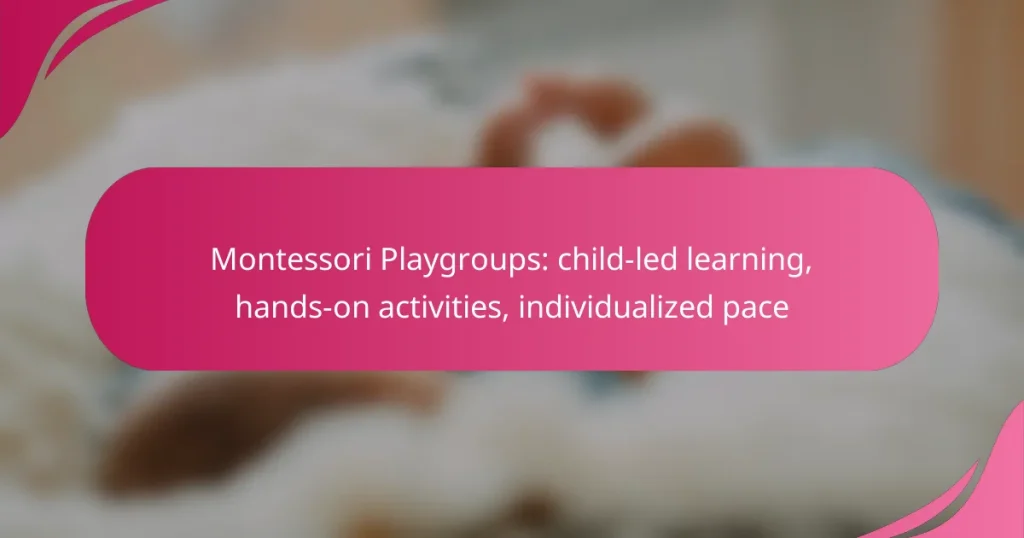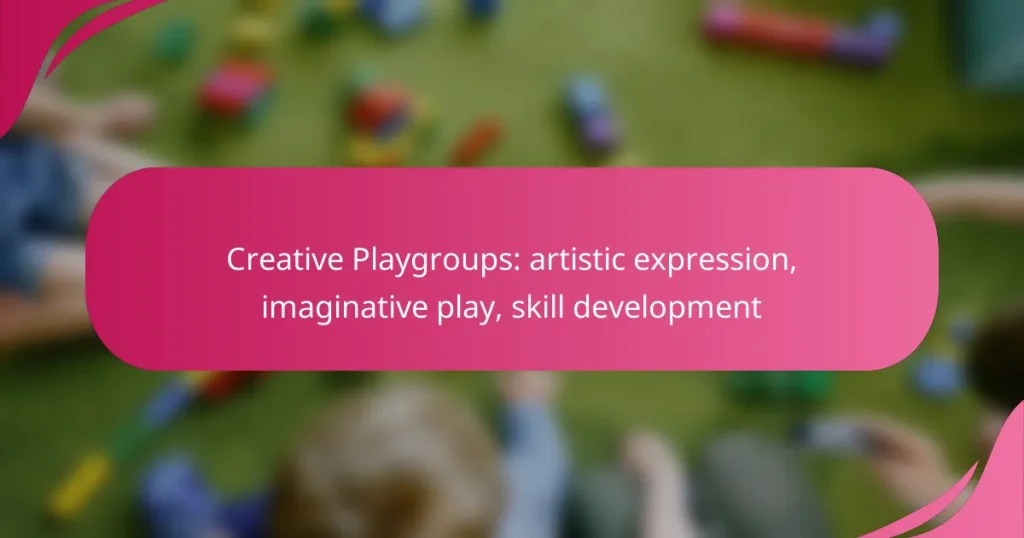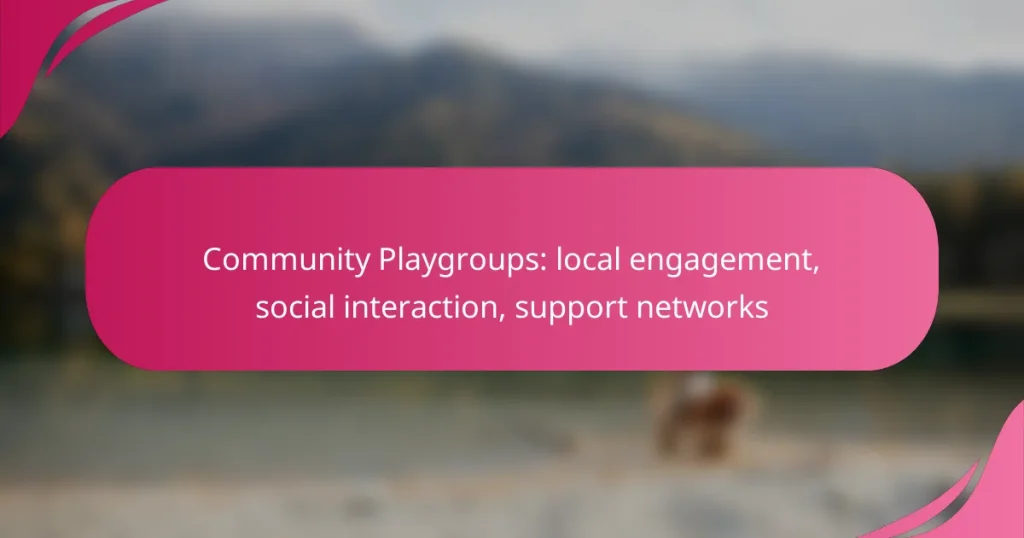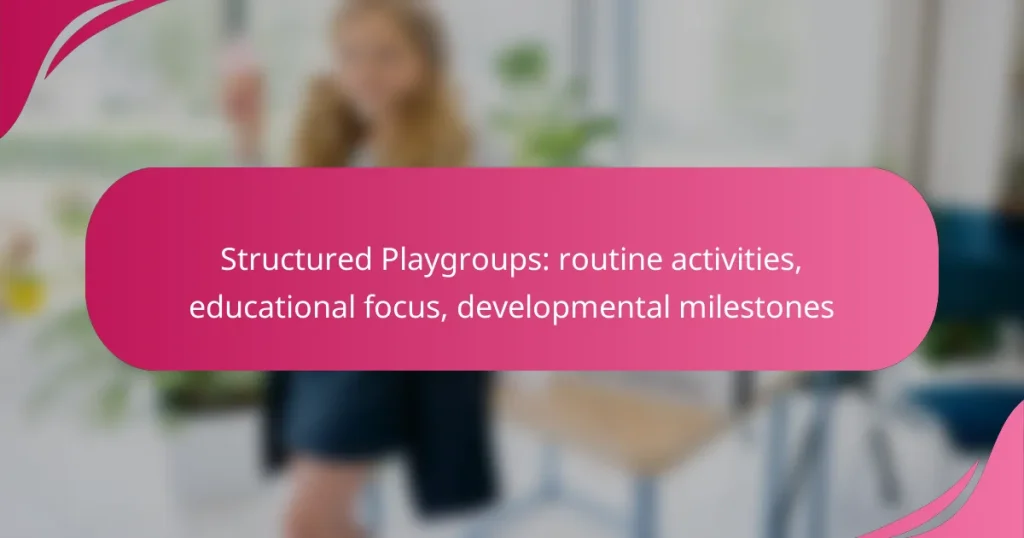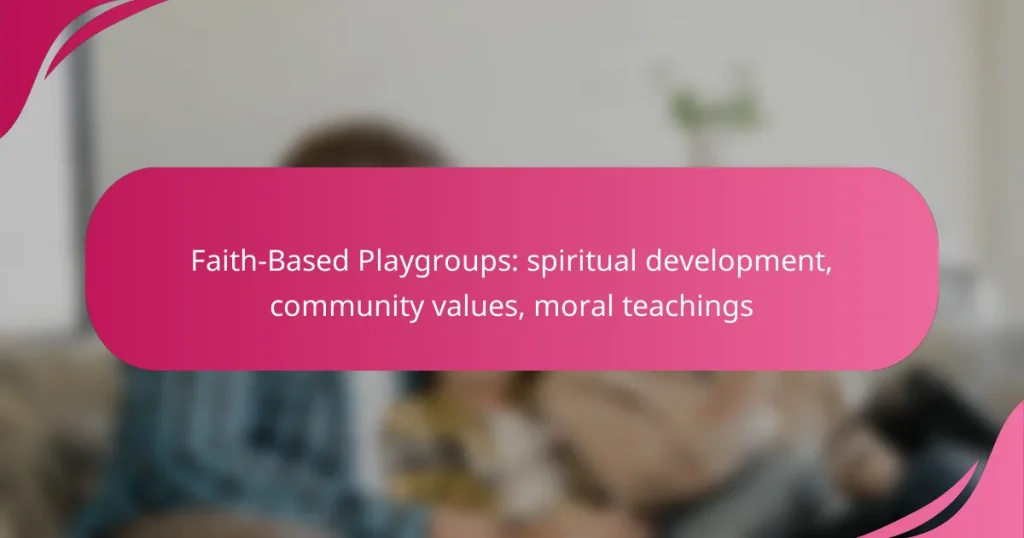Choosing the right playgroup type is essential for fostering a child’s development and social skills. With various structures, teaching methods, and environments available, parents can find a setting that aligns with their child’s unique needs and preferences. By considering factors such as age, location, and curriculum, families can ensure a positive and enriching experience for their little ones.
STEM Playgroups: science exploration, technology engagement, problem-solving
Seasonal Playgroups: holiday themes, seasonal activities, festive celebrations
Creative Playgroups: artistic expression, imaginative play, skill development
Community Playgroups: local engagement, social interaction, support networks
Cultural Playgroups: diverse backgrounds, language exposure, cultural traditions
Nature Playgroups: outdoor exploration, environmental awareness, sensory experiences
Structured Playgroups: routine activities, educational focus, developmental milestones
Faith-Based Playgroups: spiritual development, community values, moral teachings
Sports Playgroups: physical activity, teamwork skills, healthy habits
What are the benefits of choosing different playgroup types?
Choosing different playgroup types offers a range of benefits that cater to the diverse needs of children and their families. These benefits include enhanced social skills, personalized learning experiences, flexible scheduling, various teaching methods, and increased community involvement.
Social development opportunities
Different playgroup types provide unique environments for children to interact and develop social skills. For instance, structured playgroups often encourage teamwork and cooperation through group activities, while unstructured settings may foster independent social exploration. This variety helps children learn how to communicate, share, and resolve conflicts effectively.
Parents should consider the social dynamics of each playgroup type. Some may prioritize peer interaction, while others might focus on adult-led activities. Observing how children engage with one another in different settings can guide parents in selecting the best fit for their child’s social growth.
Tailored learning experiences
Different playgroup types can offer tailored learning experiences that align with a child’s developmental stage and interests. For example, Montessori playgroups emphasize self-directed learning, allowing children to explore at their own pace, while traditional playgroups may follow a set curriculum with specific learning goals.
When choosing a playgroup, parents should assess their child’s learning style and preferences. A playgroup that aligns with these factors can enhance engagement and retention, making learning more enjoyable and effective.
Flexible scheduling options
Many playgroup types provide flexible scheduling options that can accommodate varying family needs. Some playgroups offer part-time or drop-in sessions, allowing parents to choose attendance based on their schedules. This flexibility can be particularly beneficial for working families or those with multiple children.
Parents should evaluate their own availability and the playgroup’s schedule to find a suitable match. A playgroup that offers flexible hours can help reduce stress and ensure consistent participation for children.
Variety of teaching methodologies
Different playgroup types employ various teaching methodologies, which can significantly impact a child’s learning experience. Some may focus on play-based learning, while others might incorporate structured lessons or thematic units. This diversity allows parents to select a playgroup that aligns with their educational philosophy.
Understanding the teaching methods used in each playgroup can help parents make informed decisions. Observing a session or reviewing the curriculum can provide insights into how effectively a playgroup meets a child’s learning needs.
Community engagement
Choosing a playgroup that emphasizes community engagement can enhance a child’s social network and support system. Many playgroups organize events, outings, and volunteer opportunities that encourage families to connect with one another and the broader community.
Parents should look for playgroups that actively involve families in activities and decision-making. This engagement not only fosters a sense of belonging but also helps children develop social responsibility and awareness of their community.
How do different playgroup types compare?
Different playgroup types vary significantly in structure, leadership, and environment, impacting children’s socialization and development. Understanding these differences can help parents choose the best fit for their child’s needs and preferences.
Structured vs. unstructured playgroups
Structured playgroups follow a set schedule with planned activities, promoting specific skills like sharing and teamwork. These groups often include guided games and educational tasks, which can be beneficial for children who thrive in organized settings.
In contrast, unstructured playgroups allow children to explore freely, fostering creativity and independent play. This type of environment can be ideal for kids who prefer to dictate their own activities and learn through exploration.
Parent-led vs. professionally-led groups
Parent-led groups are typically organized by caregivers, providing a familiar and comfortable setting for children. These groups often emphasize community and social bonding among families, making them a great choice for parents looking to engage with others.
Professionally-led groups, on the other hand, are facilitated by trained educators or child development specialists. These leaders can offer structured learning experiences and developmental insights, which may be beneficial for children needing more guidance.
Indoor vs. outdoor playgroups
Indoor playgroups provide a controlled environment, often equipped with toys and learning materials. They can be advantageous during inclement weather or for younger children who may need a safer space to explore.
Outdoor playgroups encourage physical activity and interaction with nature, promoting gross motor skills and socialization. These settings can be particularly beneficial for older children who enjoy running and playing in open spaces.
What factors should parents consider when choosing a playgroup?
Parents should consider several key factors when selecting a playgroup, including their child’s age and developmental stage, the location and accessibility of the playgroup, the group size and adult-to-child ratio, and the curriculum and activities offered. Each of these elements plays a significant role in ensuring a positive and beneficial experience for both the child and the parents.
Child’s age and developmental stage
The child’s age and developmental stage are crucial in determining the appropriate playgroup. Different age groups have varying needs and interests, so it’s essential to choose a playgroup that caters specifically to your child’s age range. For instance, toddlers may benefit from more sensory play, while preschoolers might thrive in environments that encourage social interaction and structured activities.
Additionally, consider your child’s developmental milestones. If your child is advanced for their age, a playgroup that challenges them with more complex tasks may be beneficial. Conversely, if they are a bit behind, a nurturing environment that focuses on foundational skills could be more suitable.
Location and accessibility
Location and accessibility are vital factors when selecting a playgroup. A conveniently located playgroup can reduce travel time and make it easier for parents to participate in activities or drop-off and pick-up routines. Look for options within a reasonable distance from home or work to ensure consistency.
Also, consider the accessibility of the facility. Ensure it is safe and welcoming for children, with features such as secure entrances, adequate parking, and facilities that accommodate parents with disabilities. This can significantly enhance the overall experience for both children and parents.
Group size and adult-to-child ratio
The group size and adult-to-child ratio directly impact the quality of care and attention each child receives. Smaller groups typically allow for more individualized attention, which can enhance learning and socialization. A good rule of thumb is to look for a ratio of one adult for every three to five children, especially for younger age groups.
When evaluating group size, consider how it aligns with your child’s personality. Some children may thrive in larger groups, while others may feel overwhelmed. Observing a session can provide insight into how the group dynamics work and how well the caregivers manage the children.
Curriculum and activities offered
The curriculum and activities offered by a playgroup should align with your educational goals for your child. Look for programs that emphasize play-based learning, as this approach supports cognitive and social development. Activities should be varied and engaging, including arts and crafts, music, outdoor play, and structured games.
Additionally, inquire about the flexibility of the curriculum. Some playgroups may offer themed weeks or special events that can enrich the experience. Understanding how the activities support developmental milestones can help you choose a playgroup that best fits your child’s needs.
What are the popular playgroup types in urban areas?
In urban areas, popular playgroup types include Montessori, nature-based, and language immersion playgroups. Each type offers unique benefits and approaches to early childhood education, catering to different developmental needs and parental preferences.
Montessori playgroups
Montessori playgroups focus on child-led learning, allowing children to explore and learn at their own pace. These environments are typically structured with specific materials that promote hands-on experiences, fostering independence and critical thinking skills.
Parents should consider the teacher-to-child ratio, as smaller groups often enhance individualized attention. Look for certified Montessori educators who follow the Montessori method’s principles, ensuring a consistent and effective learning experience.
Nature-based playgroups
Nature-based playgroups emphasize outdoor learning, connecting children with the natural world. Activities often include gardening, nature walks, and outdoor play, which can enhance physical health and foster a sense of environmental stewardship.
When choosing a nature-based playgroup, check for safety measures and the availability of outdoor space. These programs can be particularly beneficial in urban settings where green spaces are limited, providing children with essential exposure to nature.
Language immersion playgroups
Language immersion playgroups introduce children to a second language through daily activities and interactions. This approach helps develop language skills naturally, as children learn through play rather than formal instruction.
Consider the language being taught and the cultural context of the playgroup. Look for programs that have native speakers as instructors to ensure authentic language exposure. These playgroups can be an excellent choice for families looking to raise bilingual children.
How do playgroup types impact child development?
Playgroup types significantly influence various aspects of child development, including cognitive, emotional, and social skills. Each type offers unique opportunities for growth, shaping how children learn to interact with their environment and peers.
Cognitive skill enhancement
Different playgroup types can enhance cognitive skills by providing varied learning experiences. For instance, structured playgroups often incorporate educational games that promote problem-solving and critical thinking. In contrast, unstructured playgroups may encourage creativity and exploration, allowing children to learn through discovery.
Parents should consider the balance of structured versus unstructured activities when choosing a playgroup. A mix can help develop a range of cognitive abilities, from logical reasoning to imaginative thinking.
Emotional regulation skills
Playgroups play a crucial role in helping children develop emotional regulation skills. Through guided interactions, children learn to identify and manage their feelings, which is essential for social interactions. For example, a playgroup that includes role-playing scenarios can teach children how to express emotions appropriately.
Choosing a playgroup that emphasizes emotional learning can be beneficial. Look for programs that incorporate activities focused on empathy, sharing, and understanding emotions, as these are vital for long-term emotional health.
Peer interaction and conflict resolution
Peer interaction is a fundamental aspect of playgroups that fosters social skills, including conflict resolution. Children learn to navigate disagreements and collaborate with others, which are critical skills for future relationships. Playgroups that encourage cooperative games can help children practice these interactions in a safe environment.
When selecting a playgroup, consider how it facilitates peer interactions. Programs that include group activities and guided discussions about resolving conflicts can provide valuable lessons in teamwork and communication.
